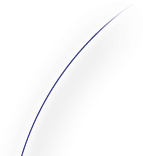Efficient Fresnel Lens Concentrator for Solar Cells
Background
 Generating electricity from sunlight is not cost-effective in many situations because of the inherent limitations of photovoltaic (PV) cells and typical lighting conditions.
Generating electricity from sunlight is not cost-effective in many situations because of the inherent limitations of photovoltaic (PV) cells and typical lighting conditions.
The production of commonly-used silicon PV cells demands expensive semiconductor fabrication methods and consumption of limited high-grade silicon feedstocks.
Newer thin-film cell technologies use cheaper fabrication methods, but consume even scarcer exotic materials. Moreover, at typical sunlight intensities, PV cells are relatively inefficient, requiring large panels for a given peak-power output.
To reduce costs, it is desirable to increase PV cell efficiencies while minimizing the use of costly materials and fabrication techniques. One promising way to accomplish this is with concentrator PV (CPV) systems. In these systems, an inexpensive optical element (usually made of glass) covering a large sun-lit area is used to greatly concentrate the light onto a small PV cell.
Higher light intensities enable higher efficiencies in converting sunlight to electricity and greatly reduces the size of the PV cell required. One important limitation of CPV, however, is the need to keep the concentrator surface aligned with the sun. For CPV to become cost-competitive with conventional PV technology, CPV designs must become less stringent in their alignment requirements (i.e. higher acceptance angles).
Description
Researchers at the University of California, Merced have invented a CPV design that features much wider acceptance angles than in other CPV systems while maintaining high efficiency and a high concentration factor.
The UC Merced researchers had previously developed CPV systems featuring glass sheets with two reflective surfaces in a Cassegrain configuration
and a non-imaging secondary element at the focal point that evenly distributes the concentrated light over a small PV cell.
In their new CPV invention, the UC Merced researchers retained the benefits of having the non-imaging secondary element, but they improved on their older CPV design by changing the primary optics into a Fresnel lens configuration and by incorporating an additional design element for better regulating the PV cell environment. This Fresnel lens CPV can be used with both silicon PV
cells and with multi-junction PV cells.
Applications
This invention may become a preferred design for CPV systems, helping make CPV more competitive as compared to fixed panel arrays for generating solar electricity.
Advantages
This novel Fresnel lens concentrator design offers a number of potential benefits over previous concentrator technologies, including:
• simple design with few parts,
• relatively low material costs,
• high optical efficiency,
• high angular tolerance to improve tracking requirements,
• uniform light distribution over photovoltaic cells, and
• suitability for use with advanced cell technologies.
Patent Status
Patent Pending
Inventors
Roland Winston
Alexander Ritschel







